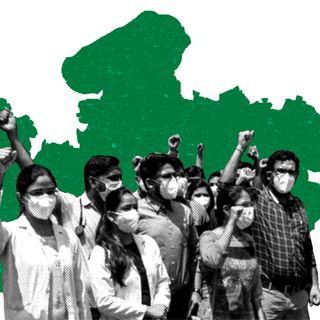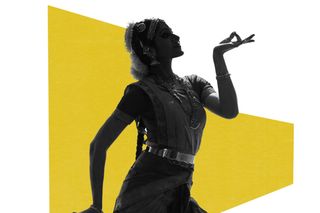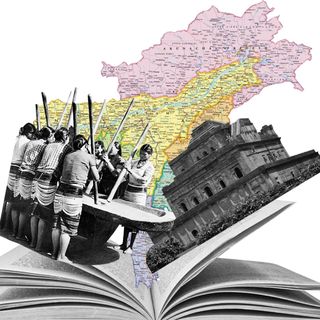
Women’s Representation in Art, Music Reduced Under Lockdown Due to Digital Divide: UNESCO
“In recent years, the digital environment has become the new frontier in the fight for gender equality and artistic freedom.”

Women, alongside individuals who identify outside the gender binary, remain grossly underrepresented in creative and cultural industries, such as art, music, storytelling, and dance across the globe — and the pandemic has visibly widened this divide, according to a new report.
Titled “Progress on the Precipice,” the report was published by the United Nations Educational, Scientific, and Cultural Organization (UNESCO). It found that the shift to digital domains during the lockdown worsened the pre-existing gender inequalities in fields like art and music — due to disparities in access to the internet and digital tools. “The digital divide remains a pressing concern, with women disproportionately facing obstacles to access digital tools for artistic creation and distribution including digital music platforms, online tutorials, and sound-mixing software,” the report notes, adding that “worldwide, 250 million fewer women than men use the Internet.”
Women are underrepresented in India’s art scene. The situation isn’t starkly different for women in the film industry either. A report from January found that women accounted for just 16% of directors working on the 100 highest-grossing Hollywood films in 2020 — with 67% of these movies employing four or fewer women in other leadership key positions of writer, executive producer, producer, editor, or cinematographer. Further, women comprised a total of 21.6% of all artists featured in the Billboard Hot 100 Year-End Charts from 2012 to 2020, 12.6% of all songwriters, and 2.6% of all music producers, according to a report published in March. While gender-disaggregated data on Indian film industries are lacking, industry insiders attest to the inequalities prevalent here as well.
Within India, the digital divide between the sexes is jarring. The UNESCO cited a 2019 report by Accenture on digital fluency among (cis) women, which ranked India among the lowest 30 nations across the globe. In fact, research suggests that even though a majority of women in India own mobile phones, they cannot dial numbers or send messages due to limited technical understanding — they could only answer calls. According to another report by the Internet and Mobile Association of India from 2019, the number of female internet users in India is half that of male users — with the gap increasing exponentially as one moves to rural areas, where males accounted for two-thirds of all internet users.
This digital divide, in turn, creates a culture of bullying and trolling women and non-binary folks online — discouraging participation and pushing them further away from the digital domain, the UNESCO report states. In fact, in October 2020, a global study of 22 countries found that more than half of the women surveyed had experienced cyber abuse — leading to mental stress and even fear for physical safety, forcing many to reduce their digital presence. “Girls are being silenced by a toxic level of harassment,” the report, which had already featured India among countries with the “biggest gender gaps in internet access,” had stated. The existing gender inequality on the internet, in essence, is spawning a vicious cycle that serves to further widen the digital gap and exclude women from several opportunities.
Related on The Swaddle:
Men, Women See Different Job Listings on Facebook Due to Algorithm Bias, Research Shows
“In recent years, the digital environment has become the new frontier in the fight for gender equality and artistic freedom,” the report states. While online platforms have given a voice to millions of people — they have, simultaneously, stifled the voices of so many women. “…and as long as men continue to dominate powerful positions in the industry and perpetuate heteronormativity, it will not end,” Lisabona Rahman, the founder of the Sinematik Gak Harus Toxic (Cinema does not Need to be Toxic) campaign in Indonesia, said at the launch of the UNESCO report.
The underrepresentation of women and non-binary folks in the artistic sphere has a two-fold impact. First, it centers the male gaze — the cultural content thus produced is non-inclusive of and non-sensitive to gender diversity, besides resulting in offensive, caricatured representations. Second, it ensures that tangible gender biases like “unequal pay” — which is quite prevalent in the creative industry — remain a minority concern in the industry.
Unfortunately, the absence of gender-specific data makes it difficult to identify the extent of the divide — and while data on cis women’s underrepresentation still exists, non-binary populations are often excluded from such endeavors. “…data-gathering efforts to date include almost no information about gender diversity and non-binary genders. Even the data utilized in this report is often limited to binary gender categories because the surveys are formulated along binary lines,” the report noted.
With lockdown, alongside the evolution of technology and its integration into the cultural industry, experts are worried the divide might put women and non-binary folks at a greater disadvantage. “Moments of crisis increase the vulnerability of already marginalized groups, including women, and can reinforce the view that women are less central or ‘more disposable’ to the creative workforce than men,” the report notes.
The alienation of women from the workforce — both within and outside the culture industry — could hamper their return to work, Aliya Hamid Rao, assistant professor of Sociology at the Singapore Management Institute explained in a Harvard Business Review podcast. And the pandemic has, unfortunately, disproportionately hit sectors with high female employment, like leisure, retail (including textile and garment manufacturing), hospitality, education, and tourism.
With countries experiencing wave-upon-wave of surges in Covid19 infections, uncertainty continues to prevail on how long pandemic protocols will keep people away from offline spaces. In order to ensure women’s contribution in the creative sphere doesn’t undergo long-term damage, UNESCO has urged governments and policymakers to introduce measures to support artists — using an intersectional lens, among other things.
Devrupa Rakshit is an Associate Editor at The Swaddle. She is a lawyer by education, a poet by accident, a painter by shaukh, and autistic by birth. You can find her on Instagram @devruparakshit.
Related


Students Demand Northeast Culture, History Be a Part of School Textbooks to Counter Racism
